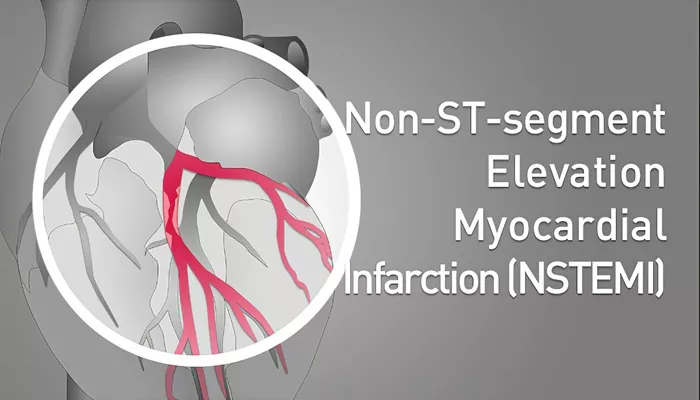Myocardial infarction (MI), commonly known as a heart attack, is a serious condition that can be life-threatening if not properly treated. It occurs when the blood flow to a part of the heart is obstructed, leading to tissue damage or death. The classification of MI is essential for accurate diagnosis and treatment. Two primary types of MI exist: Type 1 and Type 2. Understanding the key differences between them is crucial for healthcare professionals and patients alike. This article will explore the characteristics, causes, symptoms, diagnostic processes, and treatments for Type 1 and Type 2 myocardial infarctions.
What is Myocardial Infarction?
Myocardial infarction is characterized by the death of heart muscle cells due to prolonged ischemia (lack of blood flow). It usually results from the rupture or blockage of a coronary artery, which supplies blood to the heart. MI can present in varying degrees of severity, and its outcomes can be improved with early intervention. The distinction between Type 1 and Type 2 MI is based on the underlying mechanisms causing the ischemia.
Type 1 Myocardial Infarction
Definition and Causes
Type 1 MI is primarily caused by a rupture or fissure in an atherosclerotic plaque within a coronary artery. This rupture exposes the plaque’s contents, leading to the formation of a thrombus (blood clot), which obstructs blood flow. The underlying cause is typically the buildup of cholesterol and other substances within the arterial walls, which leads to coronary artery disease (CAD). This type of MI is often referred to as “spontaneous” or “atherosclerotic” MI due to its association with plaque rupture.
Risk Factors
The risk factors for Type 1 MI include:
- Advanced age
- Smoking
- Hypertension
- High cholesterol
- Diabetes
- Family history of heart disease
Symptoms
The symptoms of Type 1 MI are typical of a heart attack and can include:
- Chest pain or discomfort (often described as pressure, squeezing, or fullness)
- Pain radiating to the left arm, neck, jaw, or back
- Shortness of breath
- Cold sweats
- Nausea or vomiting
Diagnosis
Diagnosis of Type 1 MI typically involves:
- Electrocardiogram (ECG) to assess electrical activity of the heart
- Blood tests to measure cardiac biomarkers like troponin
- Coronary angiography to visualize blockages in the coronary arteries
Treatment
Treatment for Type 1 MI focuses on restoring blood flow to the heart. The primary strategies include:
- Thrombolytic therapy to dissolve blood clots
- Percutaneous coronary intervention (PCI), such as angioplasty or stenting
- CABG (Coronary Artery Bypass Grafting) in severe cases
- Long-term medications, including aspirin, statins, and beta-blockers
Type 2 Myocardial Infarction
Definition and Causes
Type 2 MI, also known as “demand ischemia,” occurs due to a mismatch between oxygen demand and supply to the heart muscle. Unlike Type 1 MI, Type 2 is not typically caused by a blockage in the coronary artery, but rather by external factors that increase the heart’s oxygen demand or decrease its oxygen supply. Conditions like severe anemia, tachycardia, hypotension, or increased physical stress can trigger Type 2 MI.
Risk Factors
The risk factors for Type 2 MI include:
- Severe anemia
- Chronic high blood pressure
- Arrhythmias (irregular heartbeats)
- Sepsis
- Acute blood loss or shock
- Prolonged physical exertion
Symptoms
Symptoms of Type 2 MI may overlap with those of Type 1, though they often stem from the underlying condition causing the ischemia. Symptoms may include:
- Chest pain or discomfort
- Shortness of breath
- Fatigue or dizziness
- Palpitations
- Generalized weakness
Diagnosis
Diagnostic methods for Type 2 MI typically involve:
- ECG to check for abnormal electrical patterns
- Cardiac biomarkers (such as troponin) to confirm heart damage
- Identification of underlying causes (e.g., anemia, arrhythmias) through blood tests and imaging studies
Treatment
Unlike Type 1 MI, the treatment for Type 2 MI is focused on addressing the underlying cause of ischemia. These treatments may include:
- Blood transfusions if anemia is present
- Medications to control blood pressure or arrhythmias
- Oxygen therapy in cases of respiratory distress
- Supportive care in cases of shock or sepsis
Key Differences Between Type 1 and Type 2 Myocardial Infarction
Mechanism of Injury
The main difference between Type 1 and Type 2 MI lies in their mechanisms. Type 1 MI is caused by a blockage in a coronary artery due to plaque rupture, whereas Type 2 MI occurs when the oxygen demand exceeds the supply, often due to an external condition.
Risk Factors
Type 1 MI is mainly associated with traditional cardiovascular risk factors like high cholesterol, smoking, and hypertension. In contrast, Type 2 MI is more related to conditions that increase the workload of the heart, such as anemia, arrhythmias, and severe stress.
Management and Treatment
While Type 1 MI often requires interventions to restore blood flow, such as PCI or thrombolytics, Type 2 MI is treated by addressing the underlying cause, whether that’s correcting anemia, controlling arrhythmias, or managing blood pressure.
Conclusion
Understanding the differences between Type 1 and Type 2 myocardial infarction is critical for effective diagnosis and treatment. Type 1 MI is primarily caused by a blockage in the coronary arteries due to plaque rupture, whereas Type 2 MI results from a mismatch between the heart’s oxygen supply and demand. Both conditions are serious and require prompt medical attention, but their management strategies differ based on their underlying causes. With early diagnosis and appropriate treatment, patients can significantly improve their chances of recovery.
Related topics:


